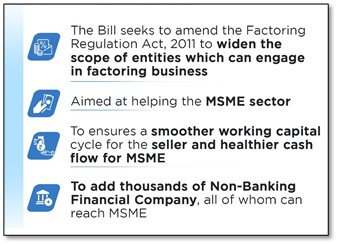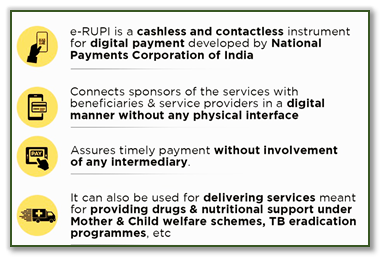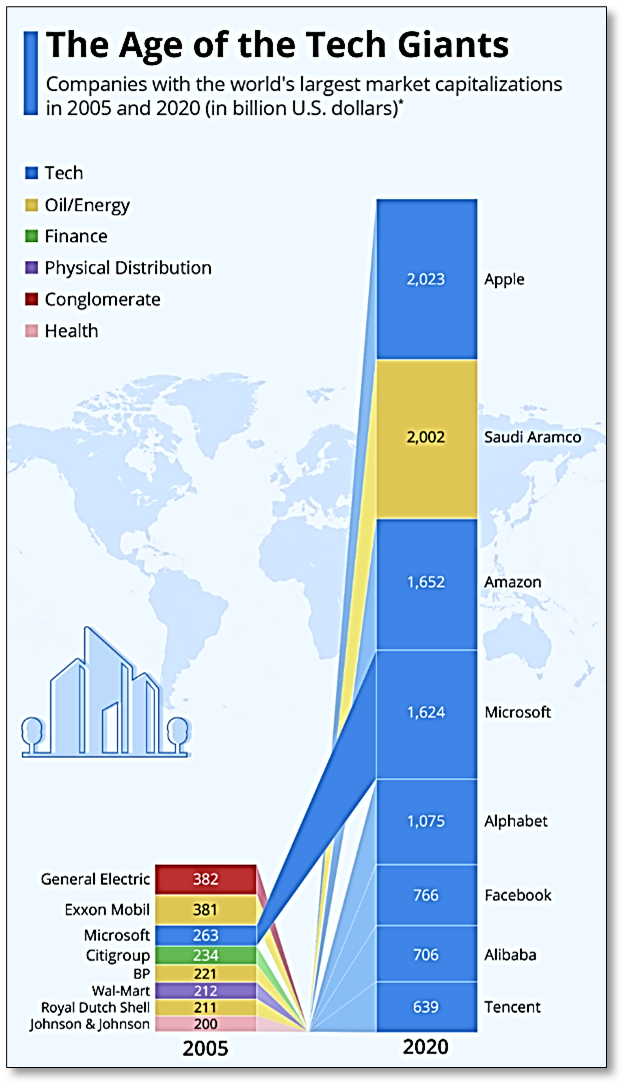Thursday, 5th August 2021
Samagra Shiksha scheme 2.0
In News
The Cabinet recently approved the extension of the centrally sponsored Samagra Shiksha scheme.
About the News
- Integration with NEP 2020: The new interventions, based on the recommendations of the NEP 2020, have been incorporated in the revamped Samagra Shiksha scheme. These include -
- preparing master trainers for training of Anganwadi workers
- in-service teacher training for ECCE teachers
- provision of upto ₹500 per child for learning materials, indigenous toys and games, play-based activities per annum for pre-primary sections in government schools
- support for pre-primary sections in government primary schools.
- Ensuring safety of Students: The child tracking provision has been included for ensuring the safety of students of government and government aided schools and greater emphasis will be given on direct benefit transfers so that the various benefits reach the students directly in the shortest time.
- Education Enablers: A sum of ₹6,000 per annum will be extended to secondary level school students for availing transport facility. For disabled children and children belonging to SC/ST community in the age bracket of 16-19 years, ₹2,000 will be provided per child to complete their secondary/senior secondary levels through NIOS/SOS.
- Optimum utilization: The existing infrastructure of schools and ITIs and Polytechnics will be used to ensure optimum utilization of the facilities, not only for school going children but also for out of school children.
About the Samagra Siksha Scheme
- Integrated Scheme: It is an integrated scheme for school education, from April 1, 2021 to March 31, 2026 with an estimated outlay of around ₹3 lakh crore. It subsumes the three erstwhile Schemes of –
- Sarva Shiksha Abhiyan (SSA),
- Rashtriya Madhyamik Shiksha Abhiyan (RMSA)
- Teacher Education.
- SDG integrated: The scheme is in accordance with Sustainable Development Goal for Education (SDG-4).
- The Scheme will be implemented as a Centrally Sponsored Scheme by the Department of School Education and Literacy, through a single State Implementation Society (SIS) at the State/UT level.
- Key Performance Indicators: In order to ensure effective implementation of the scheme and its reach to last mile, measurable Key Performance Indicators (KPIs) have been developed, for every component of Samagra Shiksha.
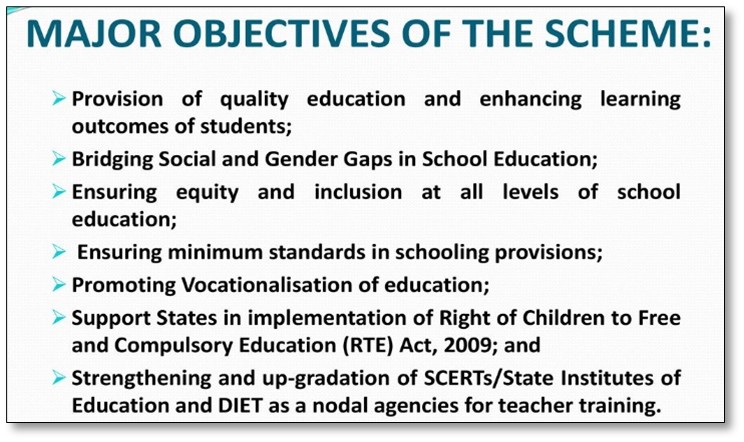
Sources:
Insolvency and Bankruptcy Code (Amendment Bill), 2021
In News: The Government has introduced the Insolvency and Bankruptcy Code (Amendment Bill), 2021 in the Lok Sabha.
About the news
- IBC (Amendment Bill) 2021 is set to replace the IBC Amendment Ordinance 2021 promulgated in April which introduced pre-packs as an insolvency resolution mechanism [Pre-packaged Insolvency Resolution Process (PIRP)] for micro, small and medium enterprises (MSMEs) with defaults up to Rs 1 crore.
What are Pre-Packs?
- A pre-pack is the resolution of the debt of a distressed company through an agreement between secured creditors and investorsinstead of a public bidding process.
- They provide the MSMEs with an opportunity to restructure their liabilities and start with a clean slatewhile still providing adequate protections so that the system is not misused by firms to avoid making payments to creditors.
- Under the pre-pack system, financial creditors will agree to terms with a potential investor and seek approval of the resolution plan from the National Company Law Tribunal (NCLT).
Significance of Pre-Packs
- CIRP is a time taking resolution. A major reason for the delays is the prolonged litigation by erstwhile promoters and potential bidders.
- The pre-pack in contrast, is limited to a maximum of 120 days with only 90 days available to stakeholders to bring a resolution plan for approval before the NCLT.
- The existing management retains control in the case of pre-packs; in the case of CIRP, a resolution professional takes control of the debtor as a representative of financial creditors.
Important provisions of the bill
- Distressed corporate debtors (CDs) are permitted to initiate a PIRP with the approval of two-thirds of their creditors to resolve their outstanding debt under the new mechanism.
- CDs are also required to submit a base resolution plan at the time of the initiation of the PIRP.
- The PIRP also allows for a Swiss challenge to the resolution plansubmitted by a CD in case operational creditors are not paid 100 % of their outstanding dues.
- Under the Swiss challenge mechanism, any third party would be permitted to submit a resolution plan for the distressed company and the original applicant would have to either match the improved resolution plan or forego the investment.
Source:
Experts Raise Concerns Over Mandatory Food Fortification
In News: In a pushback against the Centre’s plan to mandatorily fortify rice and edible oils with vitamins and minerals, experts have expressed their concerns to the Food Safety and Standards Authority of India (FSSAI), warning of the adverse impacts on health and livelihoods citing inconclusive evidence in favour of fortification.
What is food fortification?
- WHO defines food fortification as the practice of deliberately increasing the content of essential micronutrients, i.e. vitamins and minerals (including trace elements) in food, so as to improve the nutritional quality of the food supply and provide a public health benefit with minimal risk to health.
- Biofortification differs from conventional fortification in that biofortification aims to increase nutrient levels in crops during plant growth rather than through manual means during processing of the crops.
Concerns Revolving Food Fortification
- Inconclusive Evidence:
- The experts claim that evidence supporting fortification is inconclusive and certainly not adequate before major national policies are rolled out.
- Hypervitaminosis:
- Recent studies published in the medical journal Lancet and in the American Journal of Clinical Nutrition which show that both anaemia and Vitamin A deficiencies are over diagnosed, meaning that mandatory fortification could lead to hypervitaminosis.
- Hypervitaminosis a condition of abnormally high storage levels of vitamins, which can lead to various symptoms such as over excitement, irritability, or even toxicity).
- Toxicity:
- One major problem with chemical fortification of foods is that nutrients don’t work in isolation but need each other for optimal absorption. Undernourishment in India is caused by monotonous cereal-based diets with low consumption of vegetables and animal protein.
- Adding one or two synthetic chemical vitamins and minerals will not solve the larger problem, and in undernourished populations can lead to toxicity.
- A 2010 study that showed iron fortification causing gut inflammation and pathogenic gut microbiota profile in undernourished children.
- Cartelisation:
- Mandatory fortification would harm the vast informal economy of Indian farmers and food processors including local oil and rice mills, and instead benefit a small group of multinational corporations.
- Compromised Dietary Diversity:
- Dietary diversity is a healthier and more cost-effective way to fight malnutrition. Once iron-fortified rice is sold as the remedy to anaemia, the value, and choice of naturally iron-rich foods like millets, varieties of green leafy vegetables, flesh foods, liver etc will be suppressed.
Source:
Racism
In News
The UN General Assembly has approved a resolution establishing a Permanent Forum of People of African Descent to provide expert advice on addressing the challenges of racism, racial discrimination, xenophobia, and intolerance.
About the News
- The resolution adopted by consensus by the 193-member world body calls for the forum to serve as a platform for improving the safety and quality of life and livelihoods of people of African descent and their full inclusion in the societies where they live.
- The resolution says that despite efforts to combat racism, instances and various forms of racism, racial discrimination, xenophobia, and intolerance remain widespread and should be condemned. The assembly called the global fight against racism a matter of priority for the international community.
What is Racism?
- Race can be defined as the attributes, traits and features which differentiates one group from the other existing social groups. Racism is a theory that one race is superior to the other based on the physical attributes, caste, creed, ethnicity or origin.
- A theoretical framework for racism describes it on three levels:
- Structural racism (also called Institutional) is the differential access to goods, services, and opportunities based on race. It manifests as inherited disadvantage when discriminatory policies become integrated into organizations.
- Personally mediated racism occurs when prejudice results in discrimination. Racist behaviours can be intentional, unintentional, acts of commission, and/or acts of omission.
- Internalized racism is acceptance by members of stigmatized races of negative messages about their own abilities and intrinsic worth.
Racism and India
The Indian variant of racism has its own template. In India, racism, casteism, and colourism are not mutually exclusive–they may often overlap. What makes racism in India unique and complicated is its indisputable link with casteism, ethnicity as well as the colonial experience. The various factors for racism in India can be:
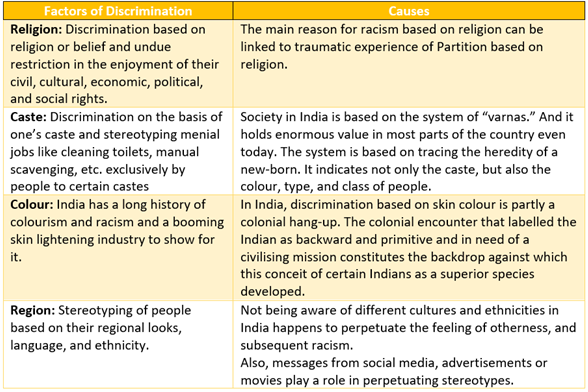
Impact of Racism: How does racism percolate in every aspect of life?
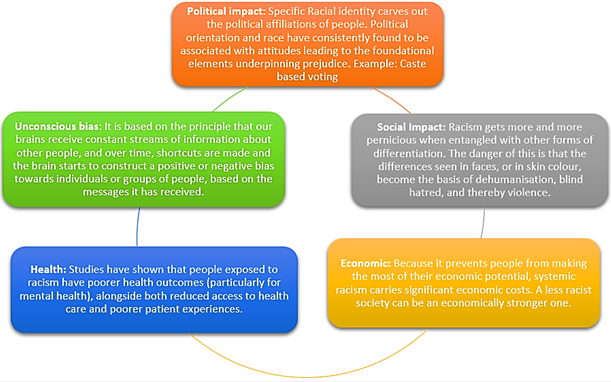
Steps needed to counter and eliminate Racism in India
- The P. Bezbaruah Committee was set up to provide remedial measures to deal with racial attacks on people from the Northeast living across the country.
- New Offences: The strongest recommendation of the Bezbaruah committee was to create new offences by adding racist crimes in the Indian Penal Code (IPC), under sections 153 (provocation with intent to cause riot) and 509 (insulting the modesty of a woman). It also advised to make such offences 'gender-neutral', 'cognizable' and 'non-bailable'.
- Fast Track courts: Provision to set up fast track courts to deal with such cases - similar to those in the SC/ST (Prevention of Atrocities) Act - an investigation of the FIR to be compulsorily completed within a period of 60 days by a special squad, not below the rank of deputy SP/ACP, special prosecutors to be appointed and trial to be completed in 90 days.
- Common History: Benedict Anderson's concept of nations as 'imagined communities' offers a perspective on why the knowledge of the shared history of different parts of the nation is crucial to a feeling of solidarity.
- The nation is imagined because it entails a sense of communion or "horizontal comradeship" between people who often do not know each other or have not even met. Despite their differences, they imagine belonging to the same collective, and they attribute to the latter a common history, traits, beliefs, and attitudes.
- A common history provides a base for the citizens to construct a feeling of horizontal comradeship despite the differences that might exist among them.
Conclusion
Race, caste, and religion remain significant features of life in India. Racism is a pervasive, preventable problem that exacts a significant toll on the self-concepts, health and well-being, and life trajectories. There is an urgent need to develop, implement, and evaluate policies, practices, and interventions through collective, system-wide action.
Question: Discuss the factors responsible for racism in India. How does racism reflect various aspects of society.
Sources:
- U.N. creates permanent body to address challenges of racism
- Racism in India: A shrouded reality
- Black Lives Matter Should Be a Wake-Up Call for India
- Addressing Race in India and Abroad: Colorism, Surveillance, and Reckoning With Police Impunity
- Religious conflicts, caste, and racial discrimination have officially shattered India
- India’s Northeast Is Not a ‘Supplement’. When Will NCERT Fix This?
- Racing Away From Racism: Why India Needs Anti-Racist Laws
- In the dark: racism in India
- International Day for the Elimination of Racial Discrimination: A Reading List on Racism in India
- Racism and Its Harmful Effects on Non- dominant Racial Ethnic Youth and Youth-Serving Providers: A Call to Action for Organizational Change
- Racism has a physical impact on the body – here’s how
- WHERE DOES RACISM COME FROM? A GUIDE TO UNCONSCIOUS BIAS
- RACISM, A THREAT TO GLOBAL PEACE
- Combating discrimination based on religion or belief
This Day in History - Neil Armstrong
On August 5, 1930, Neil Armstrong was born. He was a U.S. astronaut and the first person to set foot on the Moon. On July 20, 1969, Armstrong stepped from the Eagle onto the Moon’s dusty surface with the words, “That’s one small step for [a] man, one giant leap for mankind.” Armstrong resigned from NASA in 1971 and served as a professor of aerospace engineering at the University of Cincinnati (Ohio).

Source:
Image Source:
Image of the Day - Minervarya Pentali
This is the image of a newly discovered frog species, named Minervarya Pentali, after the renowned plant geneticist Prof. Deepak Pental. This species is also among the smallest known Minervaryan frogs. The new species was discovered from the Western Ghats biodiversity hotspot that extends along the southwest coast of the Indian peninsula.

Source:
Sabki Yojna Sabka Vikas
- Context: The Government has launched ‘Sabki Yojna Sabka Vikas’ campaign.
- It is a People’s Plan Campaign initiated in 2018 for inclusive and holistic preparation of Gram Panchayat Development Plan (GPDP).
- The campaign aims to help Gram Panchayats (GPs) in preparation of convergent and holistic GPDP for economic development and social justice as mandated under Article 243 G of Constitution through identification of sectoral infrastructural gaps in respective areas.
- The objectives of the campaign broadly include:
- Strengthening of elected representatives and Self Help Groups.
- Evidence based assessment of progress made in all 29 subjects of XI Schedule.
- Public disclosure on schemes and finances.
- Preparation of inclusive, participatory and evidence based GPDP through structured Gram Sabha involving front line workers/ supervisors of all 29 sectors of XI schedule.
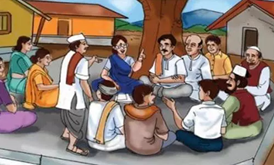
Source:
Image source:
NASA’s Boeing’s Starliner Spacecraft
- Context: The launch of Boeing’s Starliner Orbital Flight Test-2 (OFT-2) has been postponed.
- The spacecraft, which is called the Crew Space Transportation-100 (CST-100), is part of an uncrewed test flight to the International Space Station (ISS).
- The mission is part of NASA’s Commercial Crew Program.
- The spacecraft has been designed to accommodate seven passengers or a mix of crew and cargo for missions to low-Earth orbit.
- The Starliner has an innovative, weldless structure and is reusable up to 10 times with a six-month turnaround time which also features wireless internet and tablet technology for crew interfaces.
- When this test flight takes off, it will check the capabilities of the spacecraft- launch, docking, atmospheric re-entry, and a landing at a desert in USA.

Source:
Image Source:
Dragon Fruit
- Context: Consignments of dragon fruit sourced from farmers of Gujarat & West Bengal have been exported for the first time to United Kingdom & Kingdom of Bahrain.
- Scientifically referred to as Hylocereusundatus, dragon fruit is a tropical fruit that belongs to the family Cactaceae and is native to Central America.
- In India, it is also referred to as Kamalam and is grown mostly in the southern states.
- The cultivation of dragon fruit requires less water and can be grown in various kinds of soils.
- The fruit contains fiber, vitamins, minerals, and antioxidants that can help in repairing the cell damage caused by oxidative stress and reduce inflammation.

Source:
- Dragon Fruit
- For first time, Dragon Fruit grown by farmers of Gujarat & West Bengal exported to London, United Kingdom & Kingdom of Bahrain
Image source:
Red Tide
- Context: Red Tide has been currently sweeping Florida’s Gulf of Mexico Coast, killing 1,400 tonnes of fish.
- Red tide is a phenomenon caused by algal blooms during which algae become so numerous that they discolor coastal waters (hence the name red tide).
- The algal bloom may also deplete oxygen in the waters and release toxins that may cause illness in humans and other animals.
- Major factors influencing red tide events include warm ocean surface temperatures, low salinity, high nutrient content, calm seas, and rain followed by sunny days during the summer months.
- In addition, algae related to red tide can be carried long distances by winds, currents, storms, or ships.
- Red tide algae make potent natural toxins which can be hazardous to larger organisms through the processes of biomagnification and bioaccumulation.

Source:
- Red Tide - A Harmful Algal Bloom
- An industrial spill might be to blame for an algal bloom ravaging Florida
Image Source:
A grand tax bargain in danger of coming apart
A grand tax bargain in danger of coming apart
Essence: GST was implemented four years back. The article talks of how this regime is far from ideal. Firstly, there is a fundamental weakness in the design of the political architecture which is inclined towards the union. Certain important commodities like petroleum products are outside the GST structure. There are exemptions from registration and taxation which have eroded the GST base. There are issues with tax information and claims for input tax credit.
Why you should read this article?
- To gain an insight into working of GST Council.
- To understand the lacunae in the present GST regime.
Sources:
Driving the energy economy through bio-fuels
Essence: The article revolves around the idea that India being home to world’s 18% of the population is set to precede China in consumption of mineral oil for which it is heavily dependent on the Gulf countries and West Asia. In order to reduce its dependency, it should try to become self-reliant and focus more on bio-fuels which is a cleaner form of energy having benefits attached in the form of employment generation for the rural youth, less harmful effects on the environment and ensuring the energy security for the county.
Why you should read this article?
- To understand the various benefits of the Biofuels
- How Biofuels can be used to ensure the energy security of India?
Source:
Quail Farming: A new ray of hope for farmers in COVID Times.
Background
- Millions of people across the world have lost jobs amid the pandemic.
- Farming of Japanese quails have helped Odisha’s Koraput district to offset the effect of the COVID-19 pandemic on livelihoods.
Benefits Of Japanese Quail Farming
- High Profits: It is more profitable than farming poultry due to low farming costs and less risk of diseases.
- Beneficial for SMF: Japanese quail Is well suited for small and marginal farmers (SMF) as it can be easily grown in an open space.
- Cost effective: Quail farming is cheap and affordable as the birds eat local foods.
- Nutritional security: Quail farming can help in meeting the demand of food and nutrition. Quail eggs are more nutritious than other poultry eggs as they contain comparatively more protein, phosphorus, iron, vitamin A, B1 and B2
Koraput Model
- State Support: Odisha Rural Development and Marketing Society and MS Swaminathan Foundation had procured Japanese quails from the Indian Council of Agricultural Research (ICAR), Bhubaneswar.
- Women Empowerment: Quails were provided to women self-help group (SHG) member. Around 2,000 women SHG members in Koraput have become successful quail farmers.
- Vulnerable sections benefitted: Adivasis are the major beneficiary of this initiative.
Sources:
Share the article
Get Latest Updates on Offers, Event dates, and free Mentorship sessions.

Get in touch with our Expert Academic Counsellors 👋
FAQs
UPSC Daily Current Affairs focuses on learning current events on a daily basis. An aspirant needs to study regular and updated information about current events, news, and relevant topics that are important for UPSC aspirants. It covers national and international affairs, government policies, socio-economic issues, science and technology advancements, and more.
UPSC Daily Current Affairs provides aspirants with a concise and comprehensive overview of the latest happenings and developments across various fields. It helps aspirants stay updated with current affairs and provides them with valuable insights and analysis, which are essential for answering questions in the UPSC examinations. It enhances their knowledge, analytical skills, and ability to connect current affairs with the UPSC syllabus.
UPSC Daily Current Affairs covers a wide range of topics, including politics, economics, science and technology, environment, social issues, governance, international relations, and more. It offers news summaries, in-depth analyses, editorials, opinion pieces, and relevant study materials. It also provides practice questions and quizzes to help aspirants test their understanding of current affairs.
Edukemy's UPSC Daily Current Affairs can be accessed through:
- UPSC Daily Current Affairs can be accessed through Current Affairs tab at the top of the Main Page of Edukemy.
- Edukemy Mobile app: The Daily Current Affairs can also be access through Edukemy Mobile App.
- Social media: Follow Edukemy’s official social media accounts or pages that provide UPSC Daily Current Affairs updates, including Facebook, Twitter, or Telegram channels.

